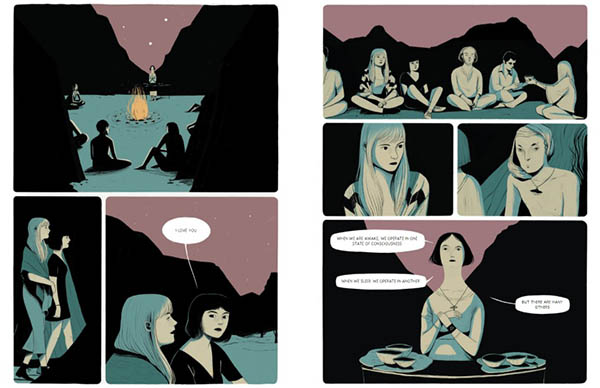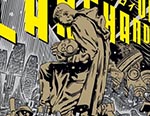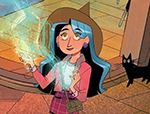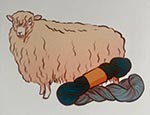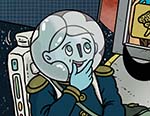Believed to have great spiritual significance, a totem is a sacred object, often an emblem for a connected group of people. It also serves as the title for Laura Pérez’s enticing graphic novel Totem, the first of her works to be translated into English by Andrea Rosenberg. The cover, though beautiful, doesn’t give much away, with a profile of a woman surrounded by a mountainous landscape, and an eerie full moon in the background. With an initial quote by Carl Sagan, an advocate of sceptical scientific enquiry, deducing that the “absence of evidence is not evidence of absence”, we can assume that Totem will touch on the spiritual, the otherworldly, and even the extraterrestrial.
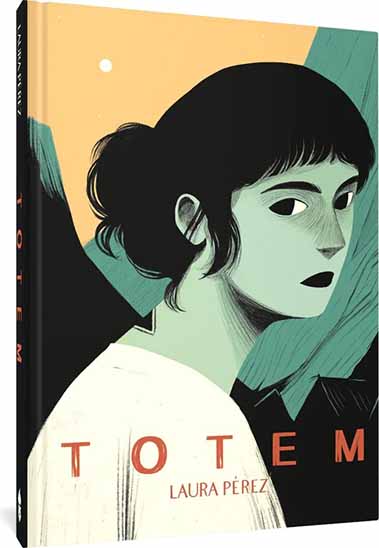
We open with a gorgeous visual of a crow flying high amongst the trees. A simple image, but with a unique perspective; it’s as if the reader is observing the scene through the eyes of someone lying flat on the ground looking upwards at the willowy, winding tree trunks and the crows soaring above. Whether the image is peaceful or ominously sinister is yet to be seen. The black and white, blue-hued panels continue from the perspective of the crow, an animal often associated with death, as our suspicious about the portentous nature of the seemingly blissful first page is confirmed; the crows have found a naked woman in the woods, and she appears to be dead.
From here, Totem shifts dramatically in artistic tone; where before there were melancholy blues and greys with sharp edges, now there are colourful backgrounds and soft visuals. We are transported into the home of an unnamed protagonist, who seems intrigued by the news broadcast about the dead body being discovered, and the suggestion of a ritualistic killing. It soon becomes apparent that the dead body is that of her partner, and that the protagonist wants to know exactly what happened to her.
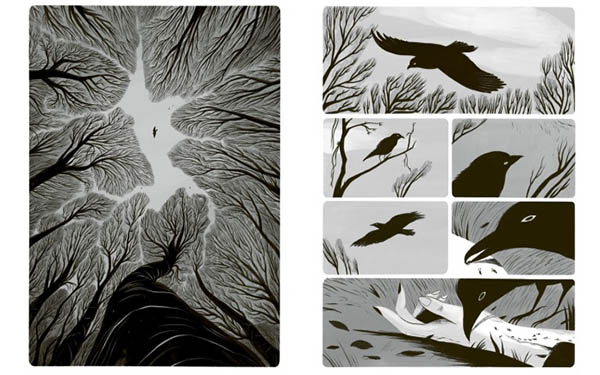
In a flashback, our main character gives some context to the situation. She and her partner decide to take a road trip to Arizona, where the desert scape and boundless mountains extend as far as the eye can see. Potentially foreshadowing her demise, our missing girl remarks: ‘If anything happened to you here, no one would ever find you. I wonder how many dead bodies are buried out there’. As the car radio drones on about supposed sightings of bright lights in the sky, which the two girls quickly brush off, they begin to explore. A dead crow isn’t exactly what you’d want your first image on an exciting trip to be, especially considering the symbolism of death, but the partner seems relatively unfazed, able to appreciate the beauty of the now empty vessel and its transformation.
As they find their remote accommodation in the middle of nowhere, a few things raise suspicion and begin to make the hairs on the back of their neck stand up, like the unknown man who steadily watches them and the sinister, deserted landscape at night. Soon, things take a real turn into the absurd. Looking up at the crescent moon, the girls wonder how many people have looked at the same moon, time and time again. Suddenly, we are years in the past, with a man and his daughter vocalising that same thought. Contrasting with the bright colours of the present day, these panels take on a black-and-white hue, with shade added for texture and emphasis.
We can deduct from the following panels that the father and daughter are working class and are visiting a woman of great influence, who is said to have magical powers. The strange older woman informs Paco (the father) and Carmen (the young girl) that the spirits of the dead are in the room with them, and that ‘something yet to pass’ is happening to them. The pencil sketches when depicting said spirits become less detailed and more erratic, with an aura of liminality surrounding them. Not quite present, and not quite gone, their faces are drawn as scribbles, half blurred out, with dark holes for eyes.
Many of the panels that follow are completely wordless, depicted only through Pérez’s intricate sketches, as we traverse time and liminal space, switching between different narratives throughout history, all connected by spiritual experiences. Whether it’s a young girl and her friends watching the strange lights falling from the sky, a sexual awakening of homosexual desires in a heterosexual marriage, or the death of a spouse or sibling, these heartfelt human emotions are universal and able to surpass time. While there’s no straightforward answer to what exactly happens to our protagonist’s partner when we return to the present, we are encouraged that “there is so much more [to life]. Different realities that sometimes become linked”.
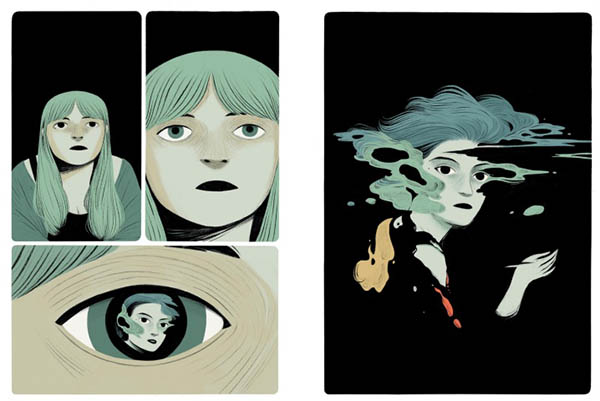
One artistic choice in particular stood out, as these girls and women throughout history are connected by some kind of thread; the conscious decision to make them all resemble our present-day missing woman. With dark hair, eyes and lips, and the same intense stare, the similarities between all the women in the narratives we follow are glaring and forces the reader to question whether this group, who become a form of ‘totem’ themselves through their connected experiences, are potentially past lives, reliving the same pain and joy over and over again.
Unexplainable, but at the same time so simple, this multi-layered bringing together of experiences feels like a strange dream in which we, the reader, are adrift, unable to control where we will be transported to next. What a journey!
Laura Pérez (W/A), Andrea Rosenberg (T) • Fantagraphics Books, $24.99
Review by Lydia Turner





